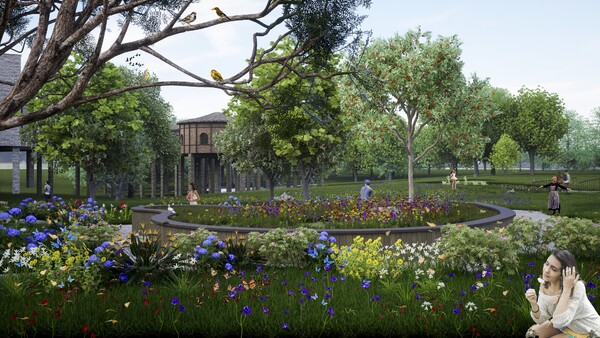Serenity Grove Rehabilitation Centre: Using Nature as a Tool for Sensory Healing
There is an unprecedented drug problem in Manchester with a high incidence of drug abuse and addiction. Additionally, the territory is facing a biodiversity crisis. A combination of pollution of the Mersey River and a golf course deterring multi-species interaction has been identified as contributing factors. Both the drug problem and the biodiversity crisis in Manchester have severe consequences for the territory. While the drug problem directly affects the well-being and safety of individuals, the biodiversity crisis threatens the long-term sustainability and health of the entire ecosystem.
This project takes a symbiotic approach to explore how a therapeutic environment for drug users can be created by addressing biodiversity issues to stimulate their senses and create a healing/therapeutic environment. By restoring the natural habitat and promoting multi-species interaction, the therapeutic environment not only benefits the biodiversity but also stimulates the senses and promotes healing for the drug users. This symbiotic approach recognizes the interconnectedness of ecological and human well-being.
Several theories such as Biophilia, Restorative Environmental Design (RED) and the Ecological Valence Theory were utilised to create an indoor environment which connects users to the outdoor space by using natural analogues such as textures, natural materials, materials which show the patina of time (wear) and a natural colour scheme. Lastly to convey a sense of progression, the design uses the building forms to depict different stages of addictions and certain strategies have been adopted to address issues faced in these stages.


